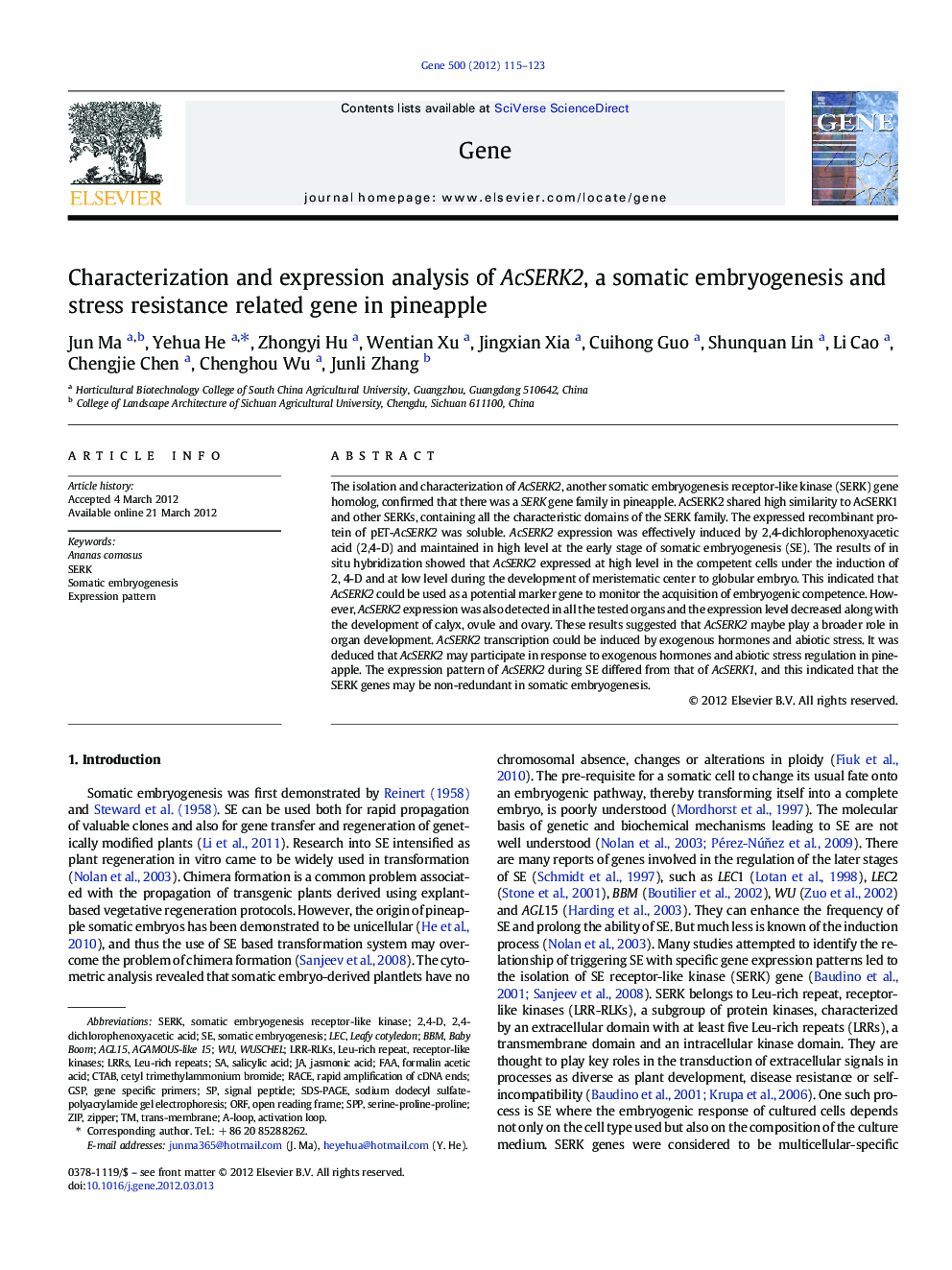| Article ID | Journal | Published Year | Pages | File Type |
|---|---|---|---|---|
| 2817933 | Gene | 2012 | 9 Pages |
The isolation and characterization of AcSERK2, another somatic embryogenesis receptor-like kinase (SERK) gene homolog, confirmed that there was a SERK gene family in pineapple. AcSERK2 shared high similarity to AcSERK1 and other SERKs, containing all the characteristic domains of the SERK family. The expressed recombinant protein of pET-AcSERK2 was soluble. AcSERK2 expression was effectively induced by 2,4-dichlorophenoxyacetic acid (2,4-D) and maintained in high level at the early stage of somatic embryogenesis (SE). The results of in situ hybridization showed that AcSERK2 expressed at high level in the competent cells under the induction of 2, 4-D and at low level during the development of meristematic center to globular embryo. This indicated that AcSERK2 could be used as a potential marker gene to monitor the acquisition of embryogenic competence. However, AcSERK2 expression was also detected in all the tested organs and the expression level decreased along with the development of calyx, ovule and ovary. These results suggested that AcSERK2 maybe play a broader role in organ development. AcSERK2 transcription could be induced by exogenous hormones and abiotic stress. It was deduced that AcSERK2 may participate in response to exogenous hormones and abiotic stress regulation in pineapple. The expression pattern of AcSERK2 during SE differed from that of AcSERK1, and this indicated that the SERK genes may be non-redundant in somatic embryogenesis.
► AcSERK2 contains all the characteristic domains of SERK family. ► The recombinant protein of pET-AcSERK2 was soluble. ► AcSERK2 can be a marker gene of the acquisition of embryogenic competence. ► AcSERK2 may play a role in the defense signal transduction and resistance response. ►AcSERK2 played broader roles in organ development of pineapple.
